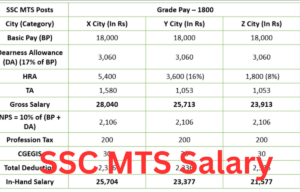Table of Contents
Lantana Camara
Context: A decade-long initiative in Madhya Pradesh to reclaim land overrun by Lantana helps residents restart agriculture and restore native biodiversity
About Lantana Camara
- Origin and Family: Lantana camara is a perennial shrub, originating from the American tropics (Central and South America) , and is part of the Verbenaceae family.
- Climate Adaptability: It has the capability to adapt to varying climates, tolerating high temperatures and moisture levels.
- Invasive Species Status: Recognized as one of the top ten most invasive species globally, it poses significant concerns in India.
- Introduction to India: Initially brought to India as an ornamental plant during the British colonial era, it rapidly became invasive, disrupting local ecosystems.
We’re now on WhatsApp. Click to Join
FAME- II
Context: The Parliamentary Standing Committee on Industry recommends extension of the deadline of the Faster Adoption & Manufacturing of Electric Vehicles/FAME India schemePhase II by three more years (current deadline is March 31, 2024).
About FAME- II Scheme
- About: Part of the National Electric Mobility Mission Plan (NEMMP), the Faster Adoption and Manufacturing of (Hybrid & Electric Vehicles) or FAME India Scheme aims to boost electric vehicle usage.
- Started from: April 2019
- Responsible Ministry: The Ministry of Heavy Industries and Public Enterprise is the nodal agency for this scheme.
- Key Features of FAME India Scheme:
- Focuses on electrifying public and shared transportation.
- Targets to incentivize the purchase of around 5 lakh three-wheelers, 7000 electric buses, and 35,000 four-wheelers.
- Plans to set up 2700 charging stations in metropolitan cities, smart cities, and hilly states, ensuring highway coverage.
Environmental DNA
Context: The Zoological Survey of India is testing new technology to assess biodiversity using environmental DNA (eDNA).
Understanding Environmental DNA (eDNA)
- Environmental DNA refers to genetic material naturally left by organisms in their environment, found in mediums like soil, water, or air.
- This DNA comes from sources like skin cells, mucus, urine, or faeces.
- As a tool, eDNA is invaluable in environmental monitoring and biodiversity studies because it allows for the indirect detection of various species, offering a window into ecological dynamics without necessitating direct observation.
Role and Significance of LaCONES
- Established in 1998 as part of CSIR’s Centre for Cellular and Molecular Biology (CCMB), LaCONES is India’s exclusive research centre dedicated to wildlife conservation and resource preservation.
- It gained prominence with the establishment of the National Wildlife Genetic Resource Bank (NWGRB) in 2018, India’s first genetic bank for wildlife conservation.
- Beyond this, LaCONES engages in critical research in animal genetics, reproductive biotechnology, and wildlife forensics.
- Collaborating with numerous national and international organisations, the laboratory contributes significantly to various conservation projects.
- Its state-of-the-art facilities and dedication to educational and outreach activities further solidify its pivotal role in wildlife conservation research.
Sushil Kumar Rudra
Context: PM Modi hosted a special Christmas program at his residence in the national capital and underlined that the Non-Cooperation Movement was conceived under the patronage of Sushil Kumar Rudra, Principal of St. Stephen’s College.
About Sushil Kumkar Rudra
Sushil Kumar Rudra (1861-1925) was an influential figure in Indian history, known for his contributions to education and the national movement.
- Position: He was the first Indian principal of St. Stephen’s College, Delhi.
- Contribution to Nationalism: Rudra played a significant role in fostering nationalism among students.
- Relationship with Gandhi: Mahatma Gandhi referred to Rudra as a “silent servant,” indicating his supportive yet unobtrusive style of leadership.
- Sacrifice: He risked his good standing with the British authorities to support Gandhi, including providing shelter to him in Delhi.
- Role in Independence Movement: Rudra’s residence was used to draft the Non-cooperation Movement, a significant campaign of resistance against British rule.
- Influence on C.F. Andrews: He was instrumental in motivating C.F. Andrews, a well-known social and religious reformer, to join Gandhi in South Africa. Rudra, Andrews, and Gandhi shared a close friendship.


 SSC MTS Salary 2025, Check Highest Salar...
SSC MTS Salary 2025, Check Highest Salar...
 F-35 Fighter Jet Stranded in Kerala: Dis...
F-35 Fighter Jet Stranded in Kerala: Dis...
 Quad Summit 2025: Key Announcements, Str...
Quad Summit 2025: Key Announcements, Str...





















